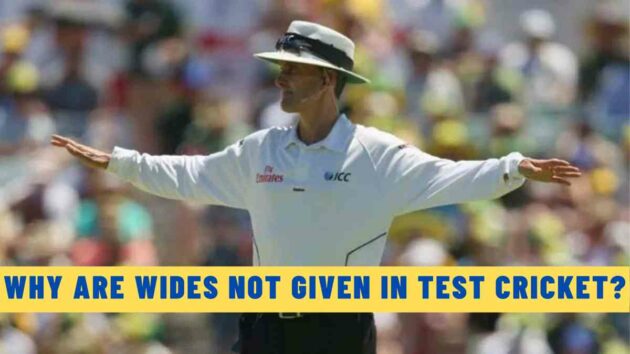A wide ball is an extra run given to the batting team when the bowler bowls a delivery that is outside a batter’s reach on the off side as well as on the leg side. A wide ball is also given when a bowler bowls a bouncer that is above the permissible height.
The batting team gets an extra run and an extra delivery in the ODI and T20 formats, and the bowler has to bowl an extra delivery. The run is added to the batting team’s total but not to the record of the batter who faces that delivery.
Wide Ball Rule in Cricket
MCC’s Law 22 states that a delivery that isn’t in the reach of a batter or can’t play a stroke from where he/she is standing is a wide ball. It is a delivery that goes wayward where the batter is unable to play it from the position where he/she has taken guard.
One of the most interesting aspects of a wide ball is that the delivery doesn’t give any extra run to the batting side in Test cricket. We explain why there are no wide balls in test cricket:
Are there no wide balls in Test cricket?
Cricket fans have witnessed this sight for a long time when wide balls aren’t given by the umpires. When it comes to Test cricket, the wide ball has a different rule.
If a bowler bowls a delivery outside the off stump or the leg stump, umpires don’t give it a wide ball unless the ball lands outside the pitch. There is no “inner wide line” in Test cricket like white ball cricket, which is the reason wide ball isn’t given by the umpires in Test cricket.
The other reason is the bowlers aren’t desperate to bowl wider deliveries in Test cricket as there isn’t any limit on the number of balls to be bowled, like in the limited overs format, and the bowling team needs to bowl out the batting side to win.
So a bowler who keeps on bowling wide balls regularly in a Test match will be a disadvantage to his team. A wide ball bowled by a bowler desperately in white ball cricket can decide the outcome of a game in critical situations.
A bowling team needs to complete a certain number of deliveries in an inning. Bowlers can take advantage by bowling wide balls, thus making it hard for the batters to score runs. Due to these reasons, the rule of wide ball needs to be more strict in modern-day cricket to keep a check on the bowlers.
Read Next | Ten Best Umpires in Cricket











